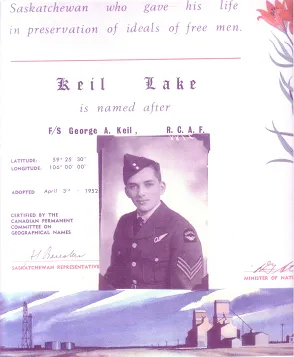Zumar, Moses (Warrant Officer 2)
Killed in Action 1942-October-20
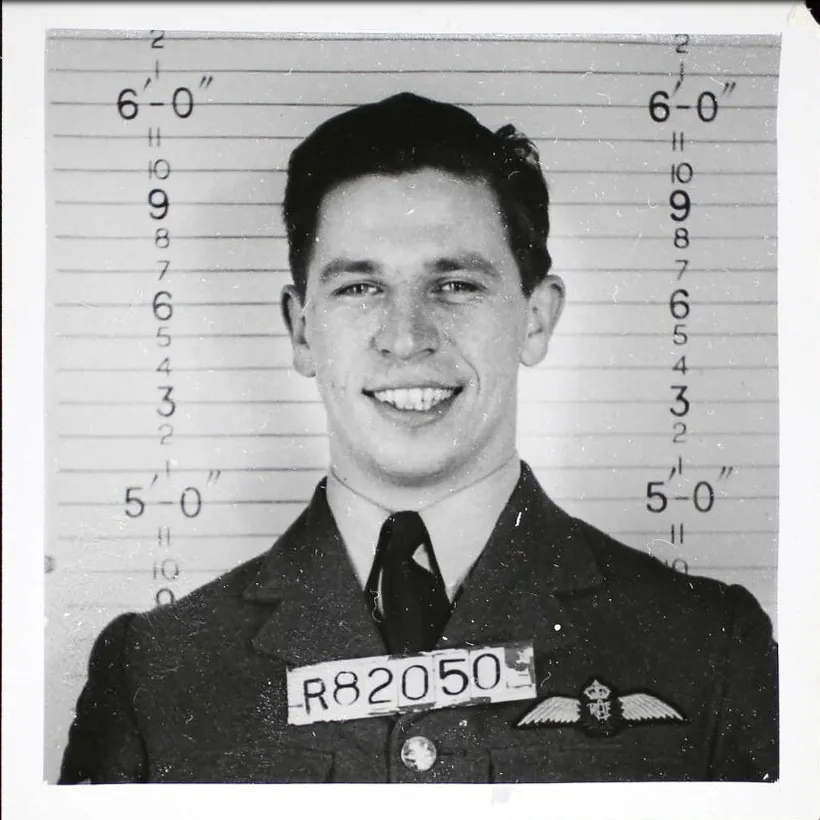

Birth Date: 1921
Born:
Parents:
Spouse:
Home: Ottawa, Ontario
Enlistment:
Enlistment Date: unkown date
Service
RCAF
Unit
407 (MP) Sqn- Squadron
To Hold On High
Base
RAF St Eval, Cornwall
Rank
Warrant Officer 2
Position
Pilot
Service Numbers
R/82050
Home
Hudson serial: EW921
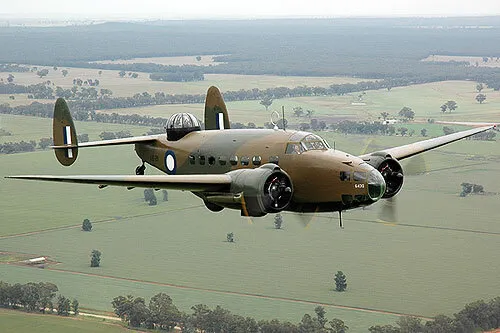
Source National Air Force Museum of Canada.
The Lockheed Hudson was an American-built light bomber and coastal reconnaissance aircraft built initially for the Royal Air Force (RAF) shortly before the outbreak of the Second World War and primarily operated by the RAF thereafter. The Hudson served throughout the war, mainly with Coastal Command, but also in transport and training roles, as well as delivering agents into occupied France. They were also used extensively with the Royal Canadian Air Force's (RCAF) anti-submarine squadrons. National Air Force Museum of Canada.
Unit Desciption
407 (MP) Sqn To Hold On High ("Demon")
History of the Squadron during World War II (Aircraft: Blenheim IV, Hudson III & V, Wellington XI, XII, XIV)
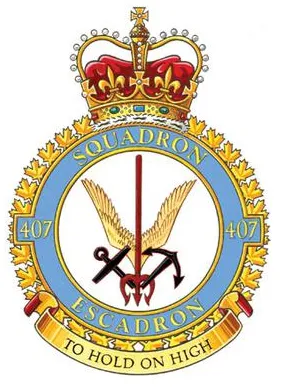
407 Squadron was the fourth RCAF squadron formed overseas in WWII, and the second to be allocated to Coastal Command. It was created on 8 May 1941 at Thorney Island, Hampshire, UK ![]() as a Coastal Strike unit, flying Bristol Blenheim Mk IV and Lockheed Hudson Mk. III and V. It continued in the anti-shipping role until 29 January 1943 when it was re-designated a General Reconnaissance unit and re-equipped with Vickers Wellington aircraft, progressively flying Mks XI, XII and XIV (the latter two equipped with Leigh Light) in the Battle of the Atlantic. The squadron flew from a number of different bases in the UK. It was finally disbanded at Chivenor, Devon, UK
as a Coastal Strike unit, flying Bristol Blenheim Mk IV and Lockheed Hudson Mk. III and V. It continued in the anti-shipping role until 29 January 1943 when it was re-designated a General Reconnaissance unit and re-equipped with Vickers Wellington aircraft, progressively flying Mks XI, XII and XIV (the latter two equipped with Leigh Light) in the Battle of the Atlantic. The squadron flew from a number of different bases in the UK. It was finally disbanded at Chivenor, Devon, UK ![]() on June 4 1945.
on June 4 1945.
In the course of WWII, the squadron flew some 2900 sorties, of which 1987 were in the anti-submarine role. In anti-shipping strikes, it was credited with sinking 10 ships , totalling 24,000 tons. 4 U-boats were claimed sunk and 3 damaged. Details of the attacks on U-boats were as follows. On 6/7 September 1943, flying out of Chivenor, Pilot Officr E.M. O’Donnell and crew of Wellington Mk XII HF115, equipped with a Leigh Light attacked what was thought to be U-669 (according to uboat.net, the submarine attacked was U-584, which was not damaged). On 10/11 February 1944, flying out of Limavady, Flying Officer P.J. Heron and crew in Wellington XII MP578 equipped with a Leigh Light attacked and sunk U-283. On 3/4 May 1944, flying out of Chivenor, Flying Officer L.J. Bateman and crew in Wellington XIV NB855 equipped with a Leigh Light attacked and sunk U-846. On 29/30 December 1944, flying out of Chivenor, Squadron Leader C.I.W. Taylor and crew in Wellington XIV NB855 equipped with a Leigh Light attacked what was thought to be U-772 (according to uboat.net, the submarine attacked was U-486, which escaped).
In the course of operations, the squadron lost 42 aircraft and 197 aircrew of whom 24 were confirmed killed and 151 presumed dead, 8 POW and 8 wounded. Awards gained by the aircrew were 3 DSOs, 1 Bar to DFC, 18 DFCs, 6 DFMs and 35 Mentioned in Dispatches. Battle Honours were: Atlantic 1943-45, English Channel and North Sea 1941-45, Fortress Europe 1942, German Ports 1942, Normandy 1944, Biscay 1942-45.Wikipedia, Kostenuk and Griffin
Maps for Movements of 407 Squadron 1941-45
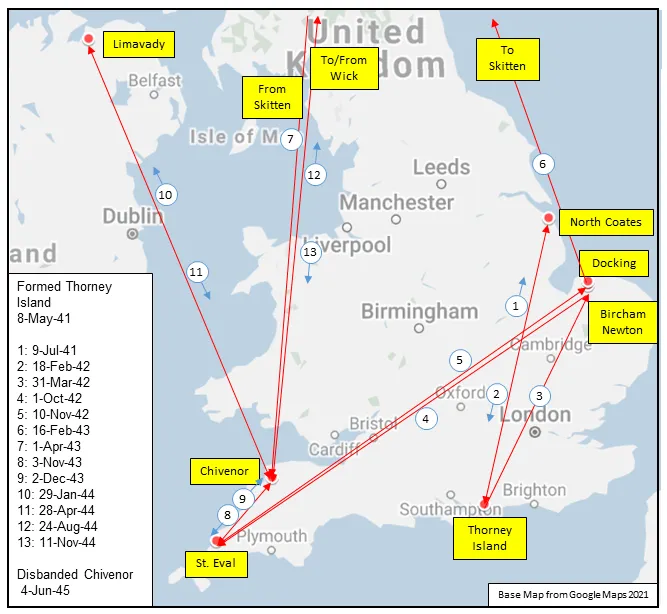
MAP 1: 407 Squadron Movements in the UK 1941-45 (right-click on image to display enlarged in new tab)
|
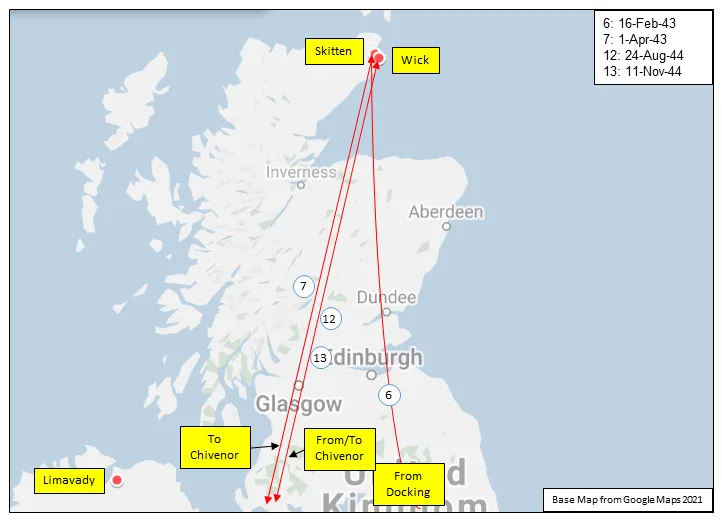
MAP 2: 407 Squadron Movements in Scotland 1943-44
|
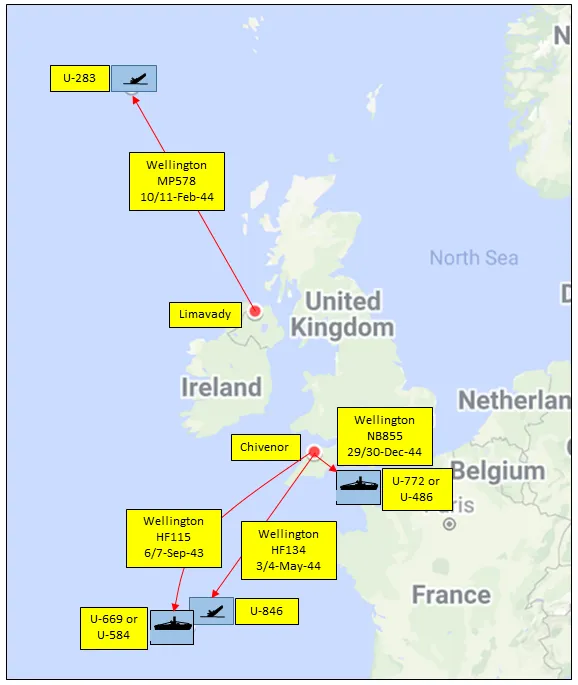
..
407 Sqn History Summary 1941-45
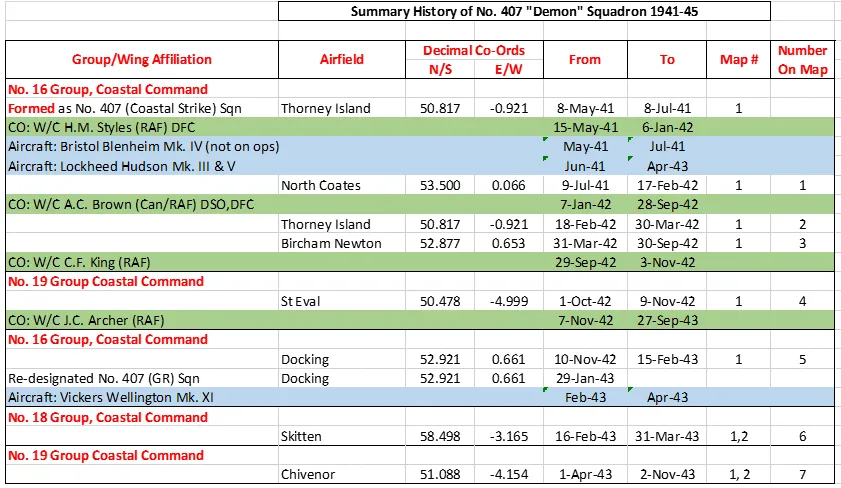
407 Sqn History Summary 1941-45 Page 2
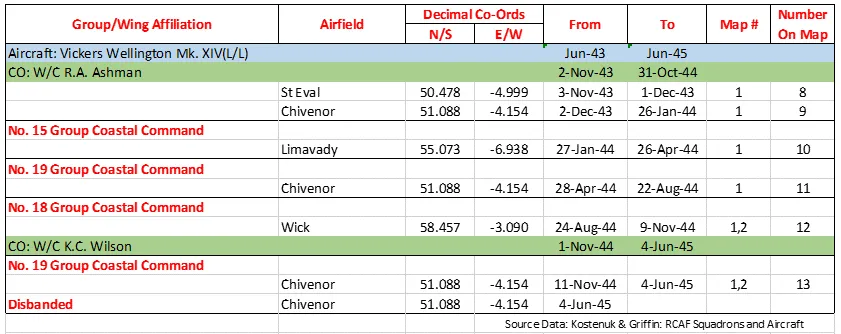
History of the Squadron Post-WWII (Aircraft: Lancaster X, Neptune, Argus, Aurora)
The squadron was re-formed as 407 (Maritime Reconnaissance) Squadron at Comox, BC ![]() on 1 July 1952, flying modified Lancaster X aircraft. The squadron was the third of four – and the only West Coast – unit formed in Maritime Command. It was re-designated 407 (Maritime Patrol) Squadron 17 July 1956. From 1958 it flew Lockheed Neptune aircraft. It was integrated into the Canadian Armed Forces on 1 February 1968. Later the squadron flew Canadair CP-107 Argus aircraft before transferring to the CP-140 Aurora which it flies today. The squadron is now designated 407 Long Range Patrol Squadron.407 Squadron has been active in Afghanistan, supporting Operation APOLLO from 2001-2003 as well as in 2009 during Operation ATHENA. 407 Squadron served in an Intelligence, Reconnaissance and Surveillance role during Operation MOBILE in the skies over Libya from 2010 to 2011. Its peacetime duties include flights to look for illegal fishing, migrant and drug smuggling and polluters. They can also perform search and rescue missions using air-droppable survival pods. In recent years, they have detected and gathered evidence against over a dozen suspected driftnet vessels in support of Canada's commitment to enforcing the United Nations moratorium on high-seas driftnet fishing.
on 1 July 1952, flying modified Lancaster X aircraft. The squadron was the third of four – and the only West Coast – unit formed in Maritime Command. It was re-designated 407 (Maritime Patrol) Squadron 17 July 1956. From 1958 it flew Lockheed Neptune aircraft. It was integrated into the Canadian Armed Forces on 1 February 1968. Later the squadron flew Canadair CP-107 Argus aircraft before transferring to the CP-140 Aurora which it flies today. The squadron is now designated 407 Long Range Patrol Squadron.407 Squadron has been active in Afghanistan, supporting Operation APOLLO from 2001-2003 as well as in 2009 during Operation ATHENA. 407 Squadron served in an Intelligence, Reconnaissance and Surveillance role during Operation MOBILE in the skies over Libya from 2010 to 2011. Its peacetime duties include flights to look for illegal fishing, migrant and drug smuggling and polluters. They can also perform search and rescue missions using air-droppable survival pods. In recent years, they have detected and gathered evidence against over a dozen suspected driftnet vessels in support of Canada's commitment to enforcing the United Nations moratorium on high-seas driftnet fishing.
